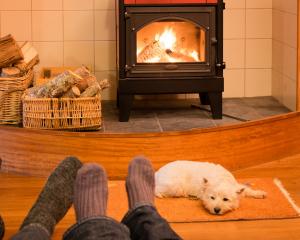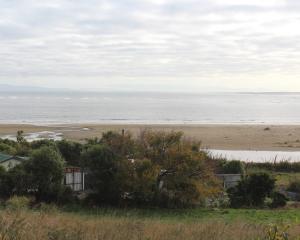Fire and Emergency New Zealand community readiness and recovery officer Sally Chesterfield said the fire started about 5.45pm on Saturday and, fuelled by wind on land parched by the Southland drought, quickly escalated out of control.
The MetService had recorded wind gusts up to 65kmh in the area. Southland has officially been declared a drought area with less than 160mm of rain since February 1 and Fenz declared a total fire ban over the province on March 29.
Attempts to douse the fire had to be abandoned at darkness, but it was monitored by crews overnight.
Multiple fire crews and appliances from as far as Glenorchy and six helicopters with monsoon buckets continued to battle the 1000ha scrub blaze from first light yesterday.
The six helicopters attacked the fire’s main front as soon as there was enough light to safely fly in a sky thick with smoke.
The helicopters working in unison were able to quickly refill monsoon buckets from a nearby creek on the fire’s west boundary and bring areas of the fire sufficiently under control to allow ground crews to enter the burn site at 8.45am.

Ms Chesterfield said it would not be an easy fire to extinguish properly as the ground beneath it was peat bog, allowing the fire to become deep-seated.
“The fire will flash across the top of the manuka and scrub and then burn down into the peat,’’ he said.
"The low water table at the moment means it will burn deeper than usual which will make it a lot harder to put out.
"It could burn for weeks, if not months underground, and then flare up again later on.”
Neighbouring farmers Roland and Moyra Boersen had about 3ha of farmland affected by the fire, but there had not been any harm to buildings or animals.
It was the second time a fire had ripped through the area in the 14 years the couple had been living on the property.
Southern Honey owner Grant Fryer had more than 80 hives nestled among the manuka bush.
He believed the hives had been saved and there was no loss to this year’s honey harvest.
But the harvest for the next few years would be affected as it would take time for the manuka to regenerate before the bees would be pollinating it, he said.
Ms Chesterfield said police and Fire and Emergency investigators were already looking at how the fire was started.
Mr Boersen said a camper van had been seen in the area around the time the fire began, but he did not know if it was connected to the event.
- Toni McDonald












